As any Doodle parent knows, your Dood has a coat unlike any other. Even within the breeds, each pup has a totally unique hair pattern and set of needs. However, one thing they all have in common is that their hair can serve as prime tick and flea hiding spots. Here is what you need to know about flea and tick prevention.
Table of Contents
- Fleas and Ticks: Special Considerations with Doodles
- Signs Of Fleas And Ticks In Your Goldendoodle
- Treatment For Fleas And Ticks For Your Doodle
- The Best Flea And Tick Medications For Goldendoodles
Fleas and Ticks: Special Considerations with Doodles
Doodle Coats
These puppies may be fun, but for the Doodle owner, it takes a lot of planning to raise these beautiful dogs properly! Whether you have a standard Poodle, Labradoodle, Aussiedoodle or Goldendoodle, keeping your dog healthy and happy is important. A huge part of that is hair management, which means keeping their coats clean and flea-free.
While all dogs can get fleas, Doodles can be more prone to ticks and fleas. Due to their textured coats that are often very thick and curly, a Dood’s hair can hide ticks easier than a standard-coated dog. Their coat also makes it difficult to identify signs of fleas.
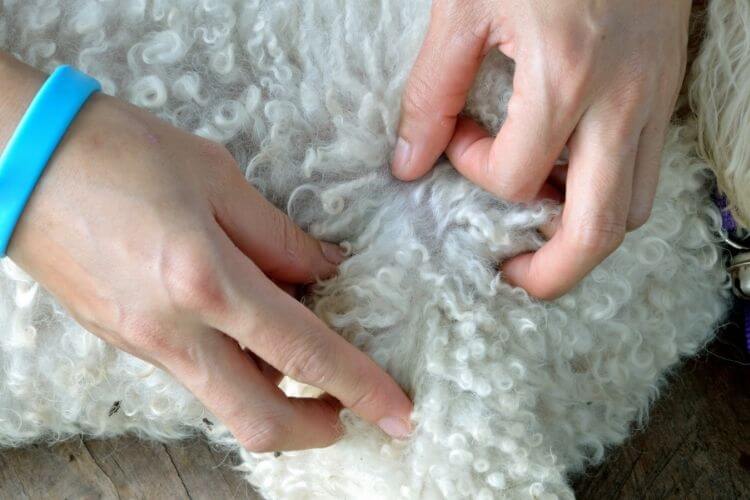
Lifestyle Factors to Consider
Many Doodle owners choose the breed because of their high-energy levels. For those who like to be outdoors and active, your Dood is the perfect companion! That being said, certain activities and areas can drive up the risk of flea and tick exposure.
The first tip for flea and tick prevention is to avoid areas where there are ticks. When you’re at dog parks, if you see other dogs with signs of fleas, stay away unless your dog is on a preventative medicine for fleas and ticks.
If your pup visits the family farm, you’re likely to expose them to other critters like livestock and wild animals. Hiking in wooded areas or camping can also up the risk of infestation.

On the other hand, if you have a pup who stays home and doesn’t venture out much, there’s less exposure.
In short, fleas and ticks are more likely the more you venture out with your pup. This definitely doesn’t mean you need to cancel your next outdoor adventure, but rather that you’ll need to keep an extra eye out for any signs of fleas or ticks in your Dood.
Signs Of Fleas And Ticks In Your Goldendoodle
Despite your best efforts with your flea and tick prevention, you may notice your pup itching, scratching, excessively licking, or even biting at themselves. Or, perhaps you feel a bump while petting your dog that wasn’t there before. You may have a flea or tick problem.

However, the symptoms of fleas and ticks aren’t always so obvious…at least at the beginning! Owners will often have to actively search for fleas, and especially ticks.
Remember, a Doodle’s beautiful hair makes it less apparent when they have ticks, so flea and tick prevention is important. This goes for all dogs, but the Doodle’s hair makes it easier to hide some visible signs.
How To Check For Fleas
Fleas can cause more than just itching. Fleas can carry tapeworms and anemia! So, identifying infestations quickly and applying proper treatment is crucial to the health of your fur baby.
Check your pup’s under belly for signs of redness or inflammation. Also inspect the skin underneath their fur. For fleas specifically, watch for:
- Itching
- Scratching
- Licking
- Redness
- Small brown or black spots on the skin
- Shedding excessive amounts of hair
- Inflammation
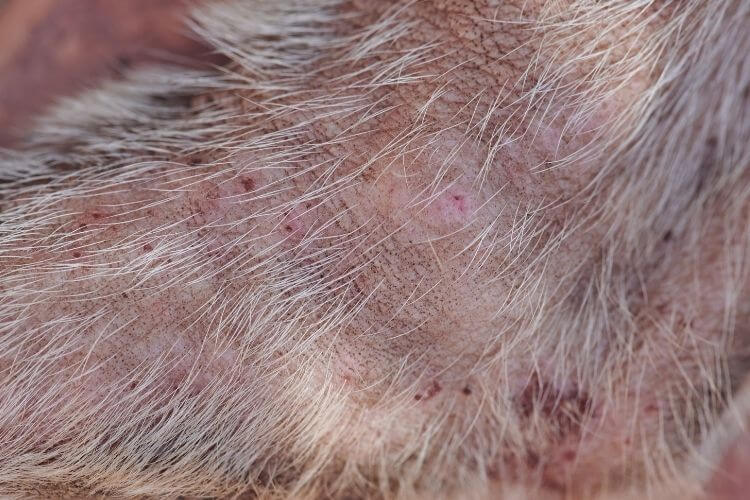
How To Check Doodles For Ticks
In the case of ticks, you’re looking for the actual bugs, which can be found anywhere in their coat. But signs your dog has been bit by a tick include:
- Fever in your Doodle
- Unexplained scabs (this can also be found from fleas)
- A small bump under the skin (which isn’t their microchip, of course.)
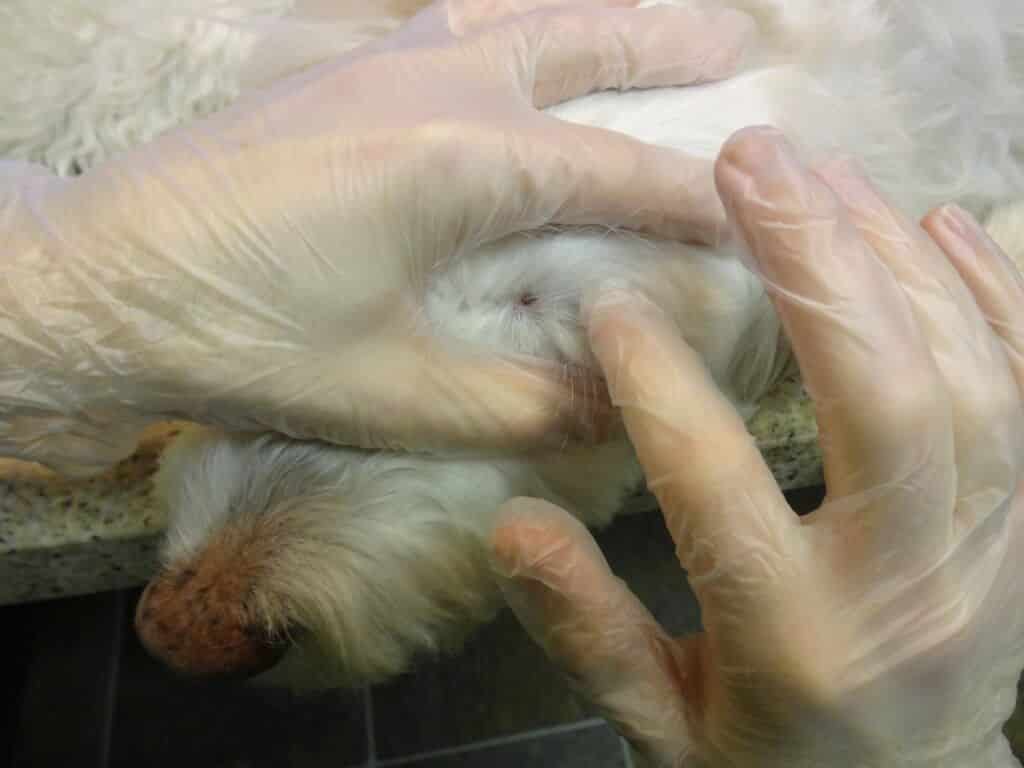
Your dog may also have a tick problem if you find ticks at home. They may bring them inside on their coat and brush them off into your house. If this is the case, you’ll want to check your dog for ticks, as well as your non-furry family members!
Places to check for ticks on your Doodle include:
- Under the collar
- The groin area
- Between their toes (in the footpads)
- Behind the ears
Check these areas every time you give your Dood a belly rub, especially after your dog is out in nature. No need to check after just walking them on a leash on the sidewalk. However, ticks can find your dog, even if they’re on your patio – so don’t let your guard down!
If you see these signs of ticks and fleas, yes, it can be frightening. But, there are many available treatments that are simple and safe for your pet.
Treatment For Fleas And Ticks For Your Doodle
Flea and tick pills are one option for keeping this arena of your dog’s health in check. Treating ticks and fleas can be as simple as a pill or other medication. Often, the treatment for fleas and ticks is the same medication used for prevention listed below.
Once you have an outbreak under control, remember to follow up with one of the prevention methods listed later on to keep your pup infestation-free!
Early Treatment is Crucial!
If your Doodle pup has ticks or fleas, early treatment is important. Do not delay! Especially with ticks, issues can arise quickly. But, with fleas, they can spread through your house to other animals. They can also transfer to bedding or carpets, leading to a quick infestation! Gross, right?
Treating Your Doodle After a Tick Bite
If your Doodle has a tick bite, you need to act fast:
- First, remove any ticks with a tick removal tool and then notify your vet immediately, especially if the tick is engorged. The vet may recommend keeping the tick in a baggie so they can test it. Freeze it if needed.
- Watch your Doodle for fever, loss of appetite, or stiff joints. This is crucial if you cannot get into the vet immediately since tick fever is a real concern. Symptoms of dog tick fever are similar to other tick diseases.
- See an emergency vet if your dog is too tired to head out on their regular walk, or has vomiting or diarrhea. Seizures are also possible.
- Afterward, start a preventative flea and tick treatment.
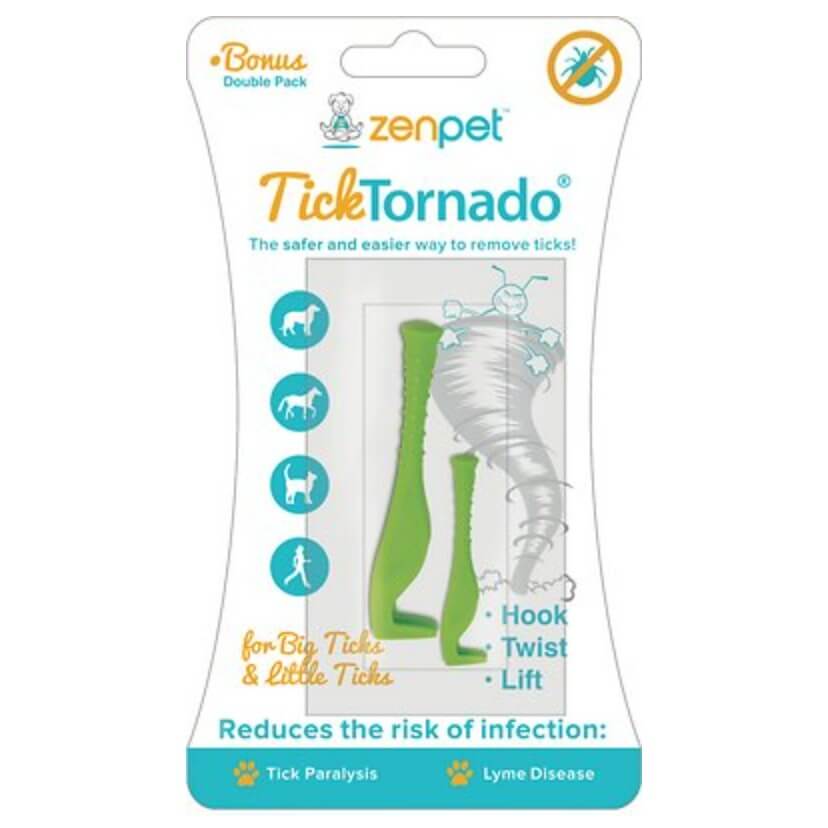
This all can happen within 1-2 days of a tick bite! Make sure to check yourself as well as other family members for ticks too, as they are also quite harmful to humans. Ticks really are nothing to mess with in either humans or your Doodle dog!
Treating Your Doodle for Fleas
Fleas can be more than a nuisance for your dog, since fleas can also spread disease. Fleas are not an overnight issue like ticks, however, proper treatment is still important. If your Doodle has fleas, here are the steps to take:
- Prepare a bath. Luckily most Doodles love bath time, so this is the easiest part. Be sure to remove any extra “soft” items since fleas can jump. Have a large pot of super hot water to dunk a comb in – you’ll use this to comb out the fleas. Unfortunately, they can’t be smooshed (even if that would be a nice outlet for your flea frustrations!).
- Next, give your dog a bath with mild soap. Then rinse well. If you’re using a basin or bathtub, drain the water and then wash again. This time, you’re getting the ones that are more infested in your dog’s hair, mane, and coat.
- Before rinsing, comb through the mane with a flea comb. Watch the neck and tail and maybe do that area twice! These are hot spots for flea feeding.
- Submerge fleas in hot water as you find them in the comb. Remember, they’re tiny! Be sure to pay attention that they don’t jump on to you.
- Rinse well and take a deep breath.
- Let your Doodle groom themselves. As long as they are rinsed, there is no reason to stop your dog from licking their coat.
- Finally, begin a flea and tick treatment for your Doodle immediately.
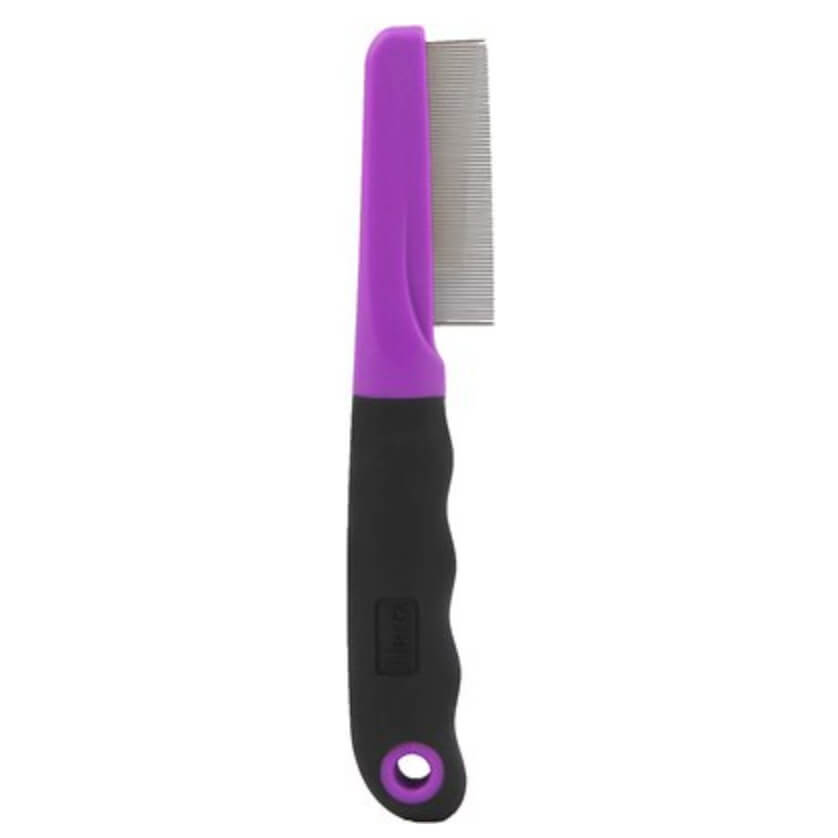
The Best Flea And Tick Medications For Goldendoodles
Now that you know why Doodle owners need to be extra-aware of flea and tick problems, let’s chat about how to prevent any infestations. Trust me, it’s much easier to prevent than it is to treat!
There are three basic ways to help prevent fleas and ticks: pills/other ingestibles, collars, and creams/lotions. These options vary based on what works for your Doodle, as well as allergies or breeding plans. Also, other animals or human babies and toddlers in your home should influence your choice.
Some options combat both pests, so if your dog makes it hard to take pills, a 2-in-1 will be easier on everyone. The faster you stop an infestation, the better. After all, an adult flea can lay 50 eggs in one day!
Be sure to find the best prevention option for your Doodle before you’re overrun with bugs. Here are some popular choices:
Seresto
A flea and tick collar that releases pesticides – specifically flumethrin and imidacloprid. It works on both fleas and ticks and each collar is meant to last approximately 8 months. However, Soresto is currently under scrutiny as it has reportedly been linked to over 1700 pet deaths.
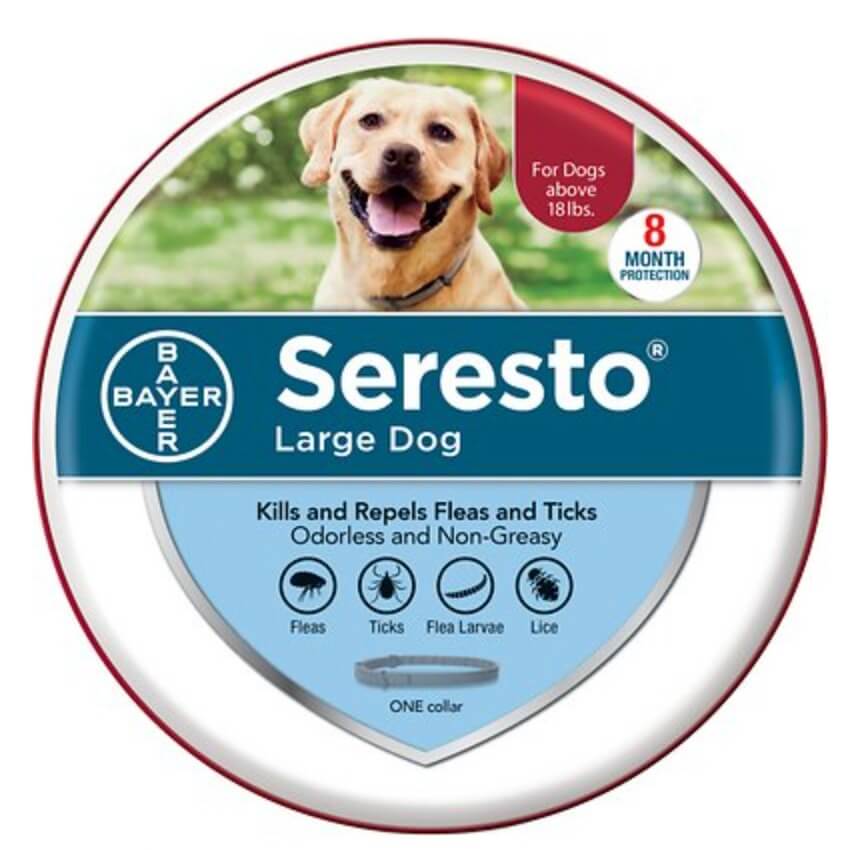
Frontline
Another pesticide that helps protect your Doodle from fleas, repels ticks and possibly mosquitos. Simply open the applicator and apply directly to the pup’s skin between the shoulder blades. You will need to reapply Frontline each month.
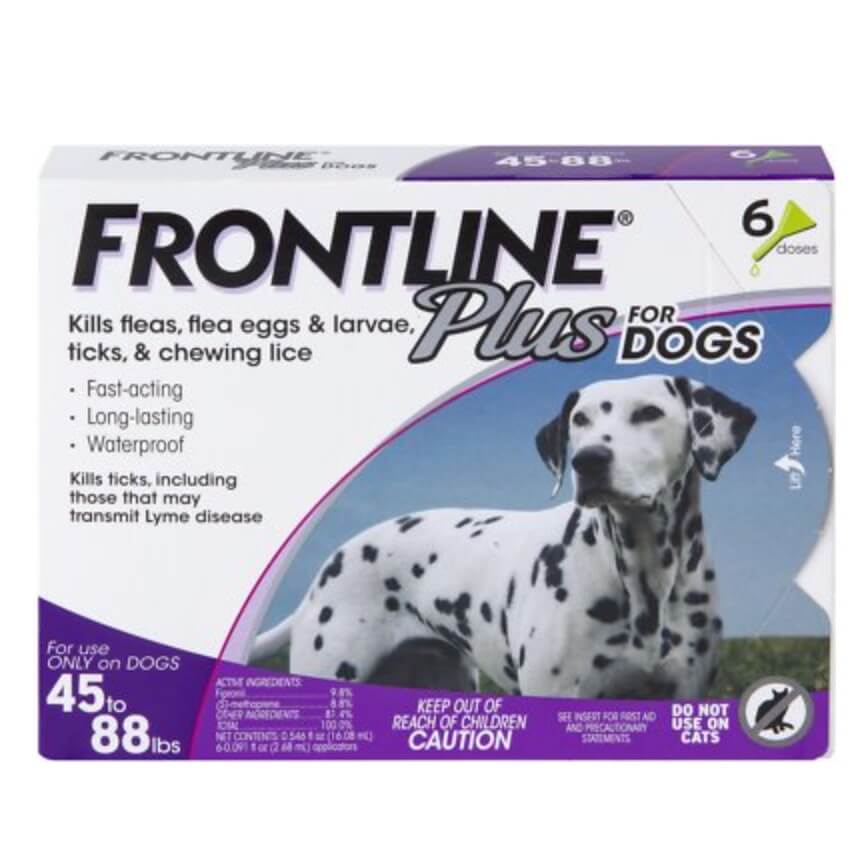
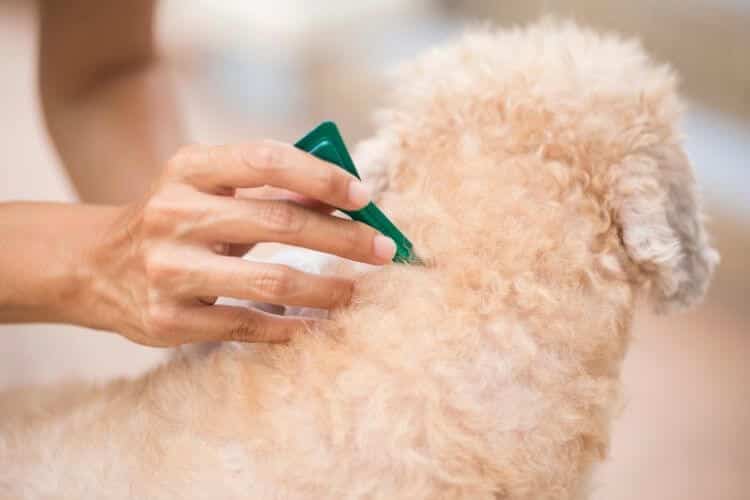
Bravecto
A tasty dog chew medicine to protect against ticks, kill fleas, and protect against flea infestation. It also comes in a topical option that you apply between the shoulder blades. Bravecto for dogs lasts up to 12 weeks but is available by prescription only.
Nexgard
A bite-sized, single monthly-dosed medication to help protect your Doodle from fleas and ticks.
Trifexis
A monthly chewable tablet for dogs. Triflexis works against fleas, heartworm, and intestinal worms, though it is not a tick prevention. Trifexis should not be used in collies or female breeding dogs.
Sentinel
These tablets are flavored and can be hidden in food! It does not work as a tick repellant but works to prevent heartworm disease and kill fleas. It also targets adult hookworms, adult roundworm, and whipworm infections in dogs and puppies.
Simparica
A monthly chewable pill for dogs that works to prevent five types of ticks and fleas. It is also effective against roundworms, hookworms, as well as heartworm. It uses a combination of sarolaner, moxidectin, and pyrantel.
Capstar
One additional option is Capstar, a flea treatment that kills fleas within 24 hours. In fact, one tablet kills more than 90% of fleas within 4 hours for dogs. The downside? This medication does not work against ticks.
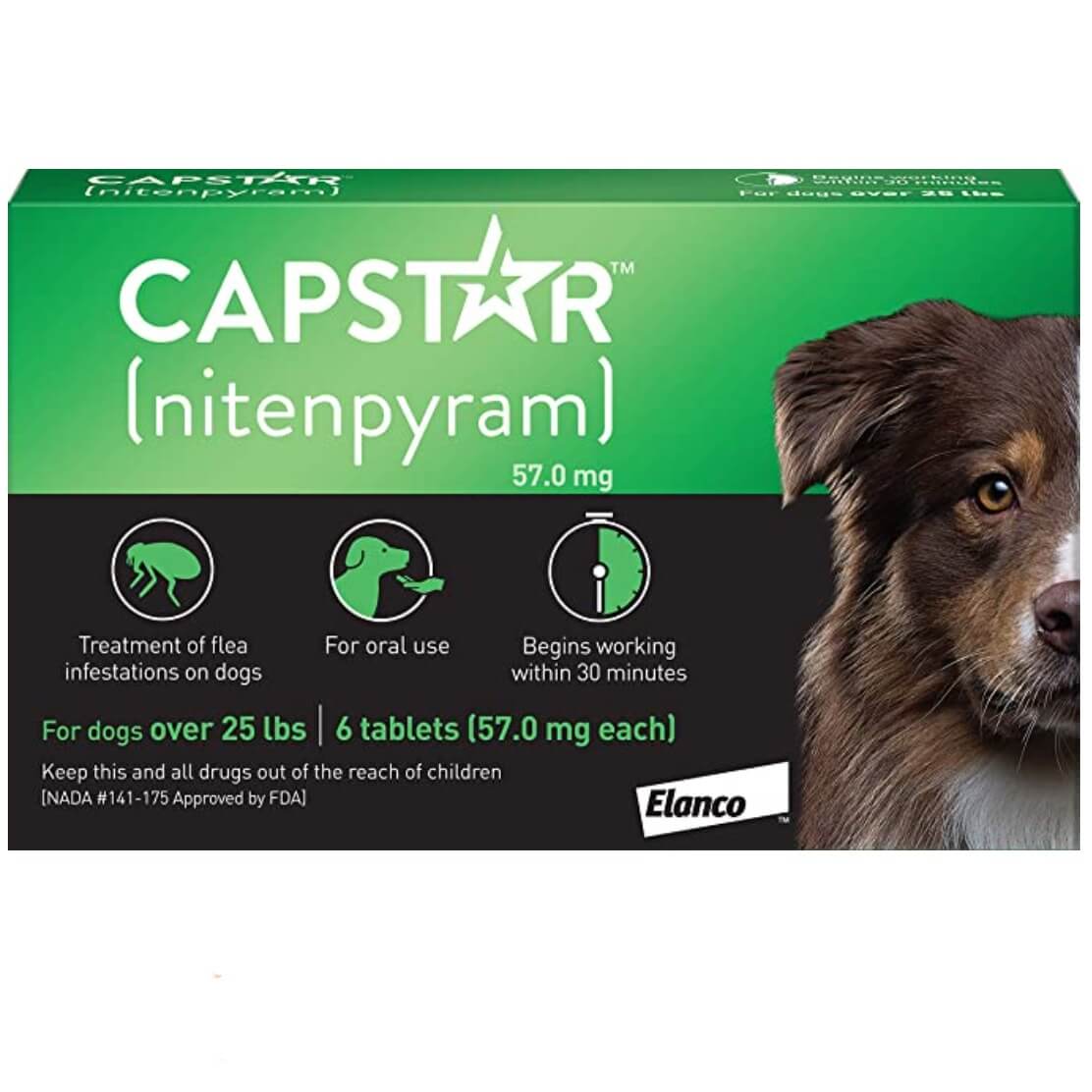
As a dog mom or dad, be sure to keep up to date on medications. Making a habit of watching where your pup goes and what they do is also a great tick and flea prevention method!
Most importantly, proper grooming, diet, and exercise go a long way in keeping your Doodle healthy and happy.
What flea and tick medications have you found most effective? Let us know in the comments below!
Learn How to Care for Your Doodle Puppy!

Perfect for first-time Doodle parents, get ALL your questions answered, including questions new Doodle parents don’t even think to ask.
Plus, get $700 worth of Bonus Materials for FREE, including:- Doodle Parenthood Community and Support Group ($190 value)
- Doodle Puppy Growth Tracker ($20 value)
- EMERGENCY Cheatsheet: When To Call The Vet Immediately ($50 value)
- HELP! Button ($145 value)
- And SO MUCH MORE!
The information on this page is for informational purposes only. It is not intended to be a substitute for qualified professional veterinary advice, diagnosis, or treatment. Always seek the advice of your veterinarian or other qualified animal health provider with any questions you may have.

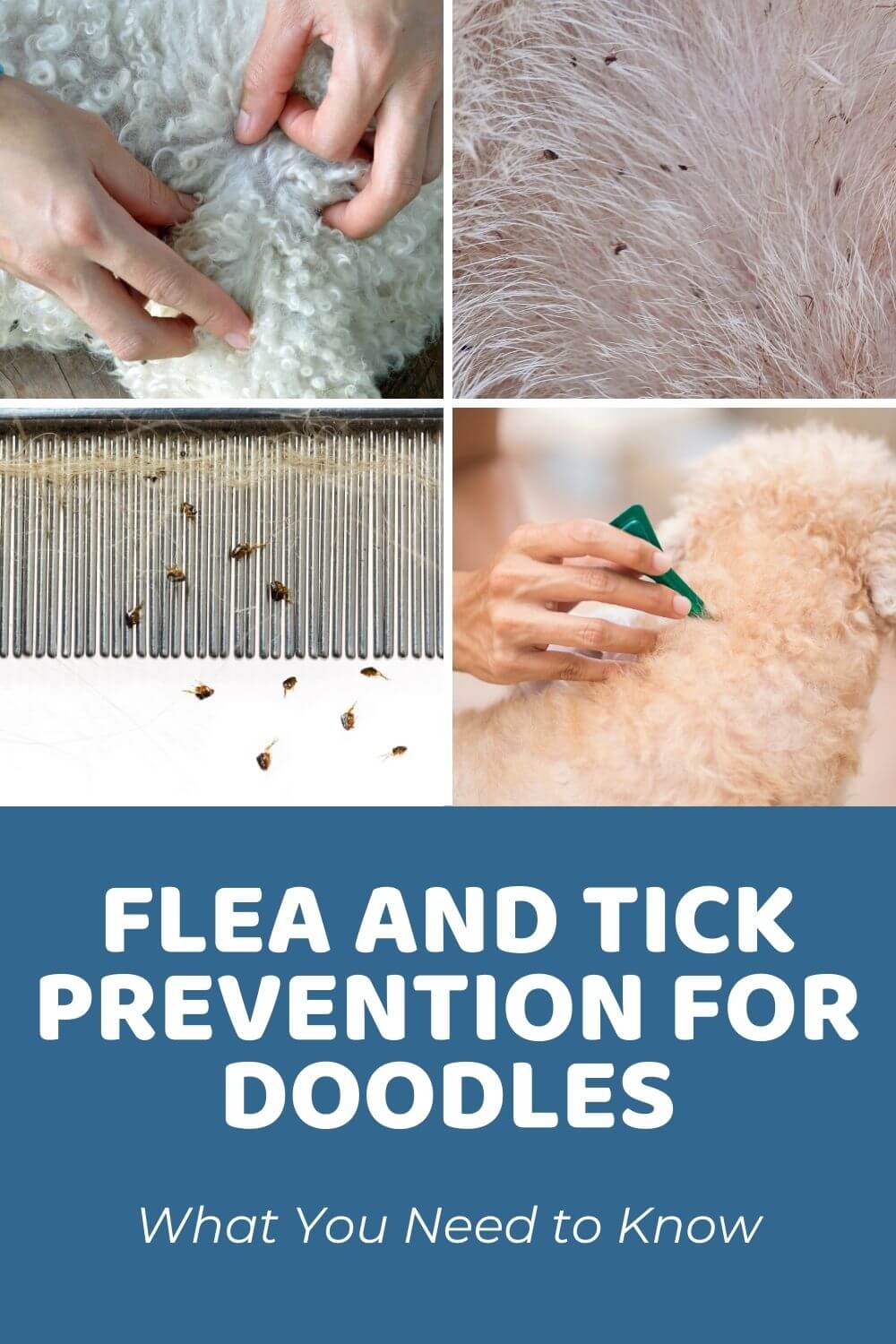
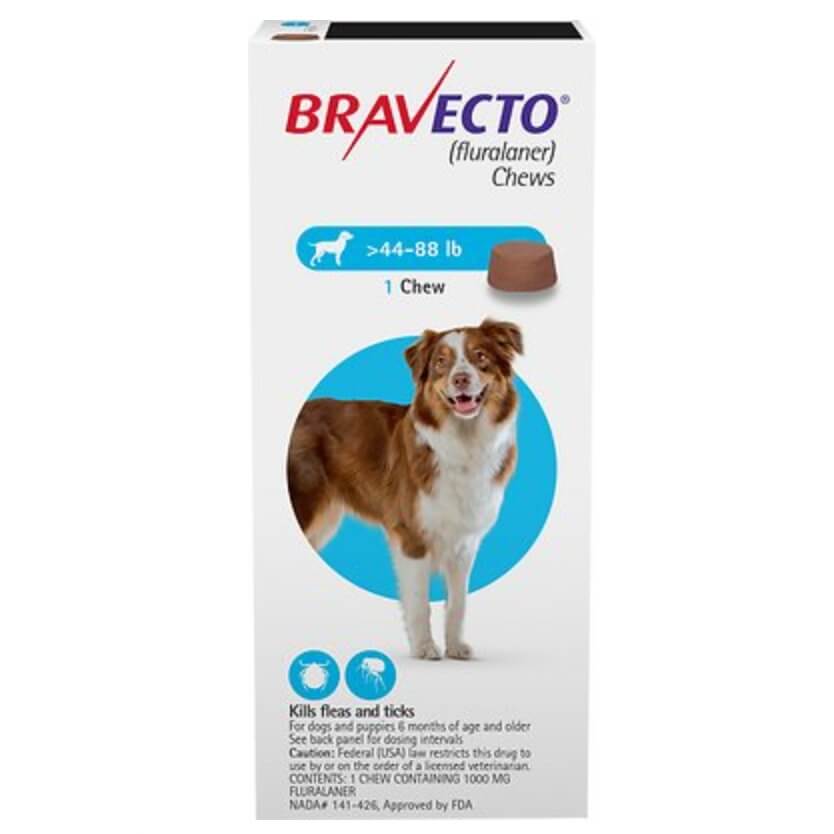
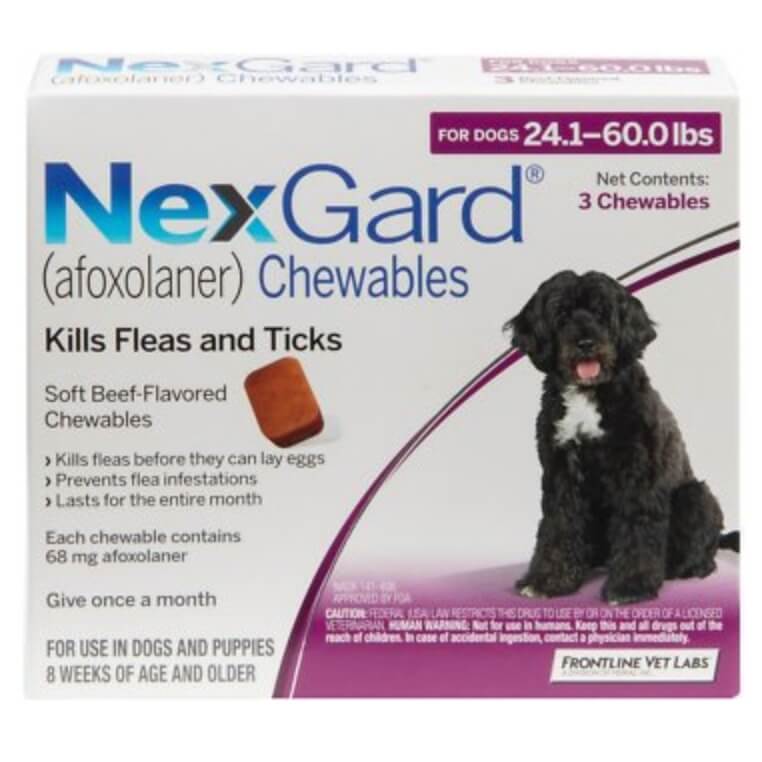

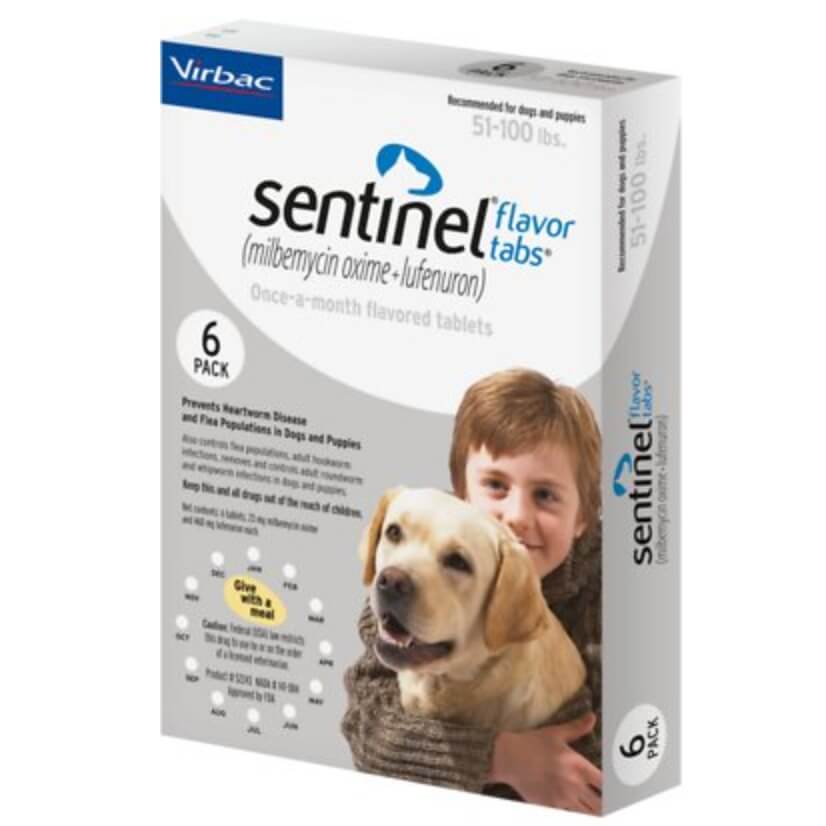
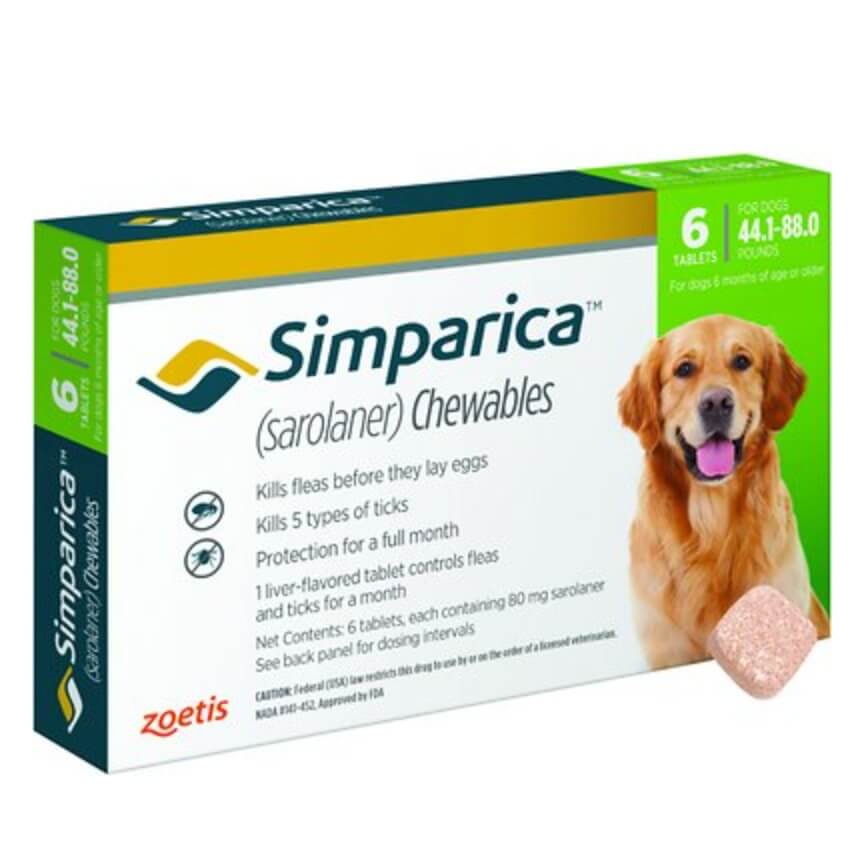




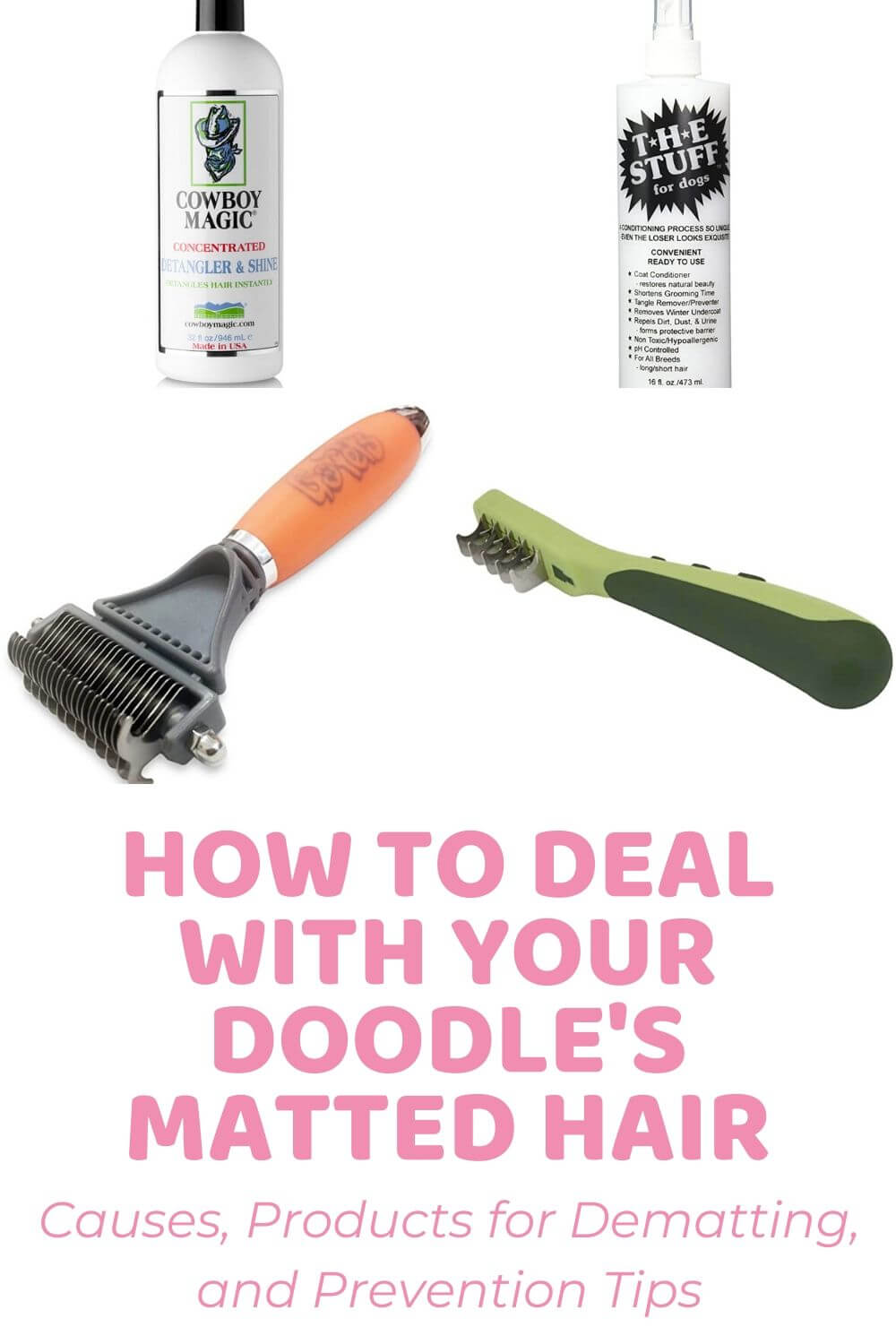


Thanks for this excellent information. It is much appreciated
April 18, 2021 at 9:02 pm